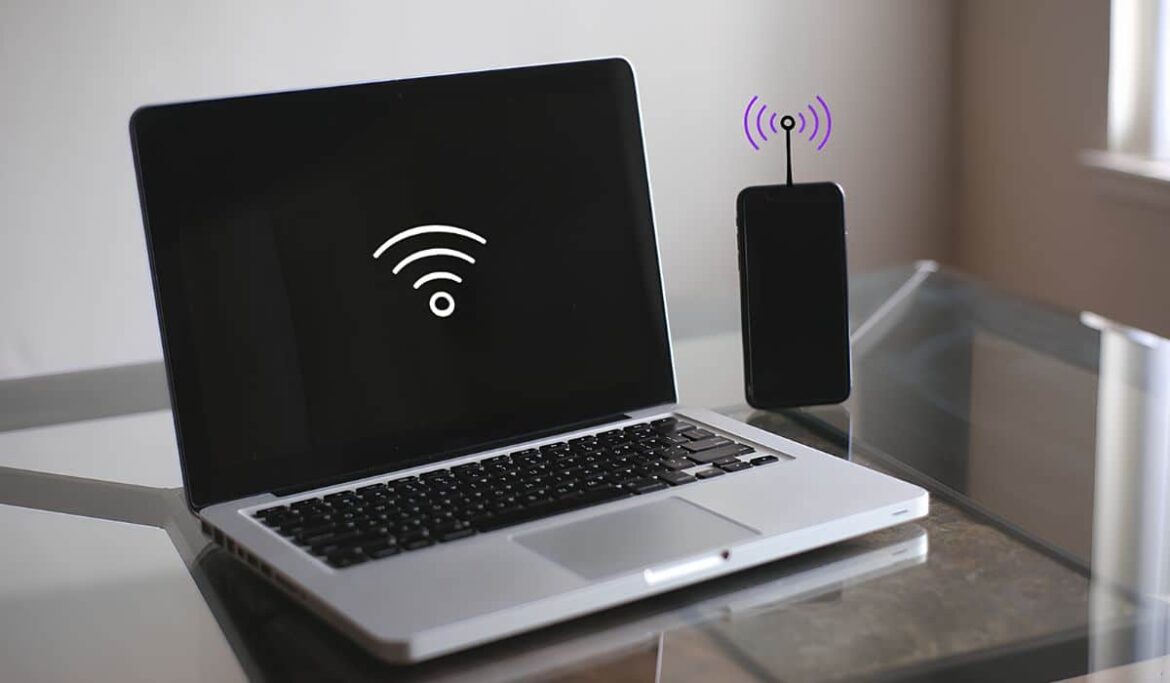557
There are several reasons why your laptop cannot find the hotspot. However, these can usually be identified quickly and the problem resolved in no time.
Laptop cannot find hotspot – possible causes and solutions
If your laptop cannot find the hotspot, there may be several reasons for this. In most cases, it is due to the signal strength or a problem with the settings.
- Signal strength: Check the signal strength of the hotspot. If the signal is weak, your laptop may not be able to connect. Try moving closer to the hotspot or repositioning the device to get better signal quality.
- Wi-Fi settings: Make sure your laptop is enabled to connect to Wi-Fi networks. Check your laptop’s settings and make sure Wi-Fi is enabled.
- Network name (SSID): Make sure you are entering the correct network name (SSID). Sometimes, similar-sounding network names can cause confusion. Check the spelling and capitalization of the network name.
- Password: The password may be incorrect. Check that you are entering the correct password for the hotspot. Check the capitalization and make sure that the password is entered correctly.
- Frequency band of the hotspot Many modern smartphones transmit the hotspot in the 5 GHz band by default. However, older laptops or Wi-Fi adapters do not always support this band, which is why the hotspot is not displayed. Set the hotspot band on your smartphone to 2.4 GHz. This can usually be done via the hotspot settings (e.g., “Configure hotspot” and then select “Wi-Fi band”). On some devices, the band is fixed and cannot be changed – check the settings.
- Saved network settings/Wi-Fi profiles: Windows and macOS systems save network settings and Wi-Fi profiles. Old or incorrect profiles can prevent the hotspot from being displayed. Delete old Wi-Fi profiles and search for the hotspot again. In Windows, this can be done in the “Network and Internet settings”, in macOS via “Network” in the system settings.
- VPN or security software: VPN or security software on your laptop or smartphone may be blocking the hotspot connection. Try disabling the VPN or security software to see if you can find and connect to the hotspot.
- Tariff and mobile phone provider: Some mobile phone providers restrict the hotspot function or charge additional fees. Check your tariff and the settings in your provider’s customer portal. Some providers require a separate hotspot option or only allow limited use.
- Maximum number of connected devices: Both Android and iOS limit the number of devices that can be connected to the hotspot at the same time. Once the limit is reached, the laptop cannot connect. Temporarily disconnect other devices from the hotspot to make room for the laptop.
Other reasons why the laptop cannot find the hotspot
Other problems often arise that prevent the device from connecting to the hotspot. Sometimes other devices can be the problem, or there may be various issues with drivers.
- Conflicts with other devices: It is possible that other devices nearby are causing interference and affecting the connection. Try to keep other electronic devices such as microwaves or cordless phones away from the hotspot.
- Driver issues: Check that your Wi-Fi drivers are up to date. Outdated drivers can cause connection problems. Update your laptop’s drivers to ensure they are up to date.
- Hotspot settings: Test the hotspot settings. The hotspot may be configured to only allow certain devices or support a limited number of connections. Select your laptop in the settings so that it can connect.
- Check router mode: Some routers bundle 2.4 GHz and 5 GHz under one SSID. In this case, it may help to move the device further away from the hotspot so that it automatically switches to 2.4 GHz.
- Restart devices: Restarting your laptop and smartphone can resolve temporary network issues.
- Reset network settings: If problems persist, you can reset the network settings on your smartphone (note: all saved networks will be deleted).

